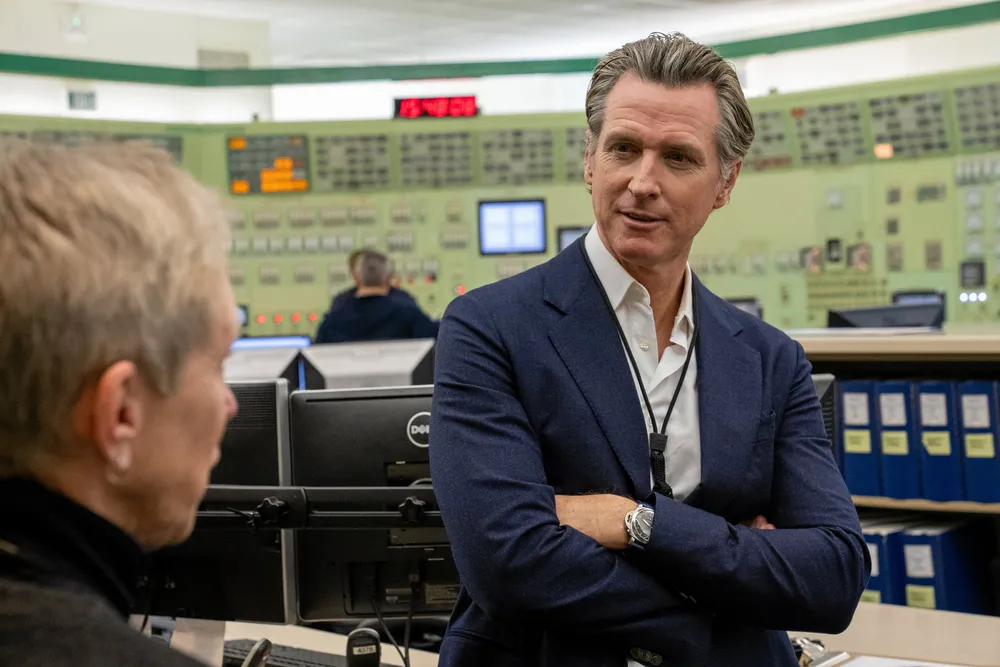California floating wind port under fire as opponents demand Trump claw back grant
Partnership of local and national sector critics aim to stop sector progress as the Golden State inches towards its 25GW goal

Seasoned offshore wind opponents are demanding President Donald Trump rescind a $427m grant awarded by the previous administration to transform California’s Humboldt Bay into the Pacific Northwest’s premier floating wind terminal.
The demands come as the state held hearings Wednesday aimed at kickstarting port development to enable a world-leading floating wind industry.
The project would redevelop some 168 acres (68 ha) for floating wind assembly and marshalling, including three wharfs and wet storage for up to 12 wind turbines.
California-based React-Alliance and the Committee for a Constructive Tomorrow (CFACT) in Washington, DC, both members of the National Offshore Wind Opposition Alliance (NOOA), signed a letter earlier this month demanding DoT head Sean Duffy claw back any unspent funds and “terminate the awarded grant as a misappropriation of federal funds.”
“The grant is not in the ‘public interest’,” the letter said, which “can be clearly demonstrated by the lack of viability of the floating offshore wind ‘industry’,” it added.
State voters last year also approved a $10bn climate bond that includes $475m for floating wind port infrastructure. The government likewise agreed to procure up to 7.6GW by 2035-37.
With strong winds offshore, the Golden State has some 200GW of technically feasible capacity but will struggle with multiple hurdles, including lack of port infrastructure.
Shoreside development is rigidly managed by state agencies, and despite its 840-mile (1,350-km) coastline, California has few industrial ports with sufficient area and other qualifications to serve as assembly and staging for floating wind.
The former timber port in the state’s lightly populated north is one of few that qualify, allowing it to service the two leases in the Humboldt wind energy area (WEA).
The React-CFACT letter referenced Trump’s anti-offshore wind memo directing government agencies to “’assess prior approvals for deficiencies’ and this offshore wind grant certainly meets that standard,” it said.
California’s long road
In contrast to the Northeast where projects under development have been derailed by the Presidential memo, California’s sector is likely years away, its 2030 goal notwithstanding, and so is expected to be only minimally impacted for the duration of Trump’s term.
Technical challenges will likely delay installation.
The Pacific outer continental shelf falls away sharply, and development will occur in waters around 1,000-metres deep. As less than 300MW of floating capacity exists in the world, all of it in waters 300-metres or less, the industry will need to find solutions for this depth.
California leaseholders, including Equinor, RWE, and Copenhagen Infrastructure Partners, idled development in the Morro Bay and Humboldt WEAs prior to Trump taking office.
Lengthy development timelines would allow port infrastructure to be constructed in preparation for the eventual ramp, though.
“A floating wind port network would require a significant investment and would take time (potentially 10 years or more to plan, permit, and construct),” the report said.
California is following a multiport strategy to serve the industry, although so far only the Port of Long Beach near Los Angeles is tipped for staging and assembly.
Governor Gavin Newsom has proposed allocating the first $228m tranche of state funding for floating wind port development in this year’s budget, while the California Energy Commission is looking at finalising approval of the $42.8m on waterfront facilities.
“These are important down payments that will catalyze public and private funding, create new jobs, and implement the multi-port strategy to secure California’s leadership in offshore wind,” said Adam Stern, executive director of Offshore Wind California (OWC), a trade group of offshore wind developers and technology companies.
(Copyright)